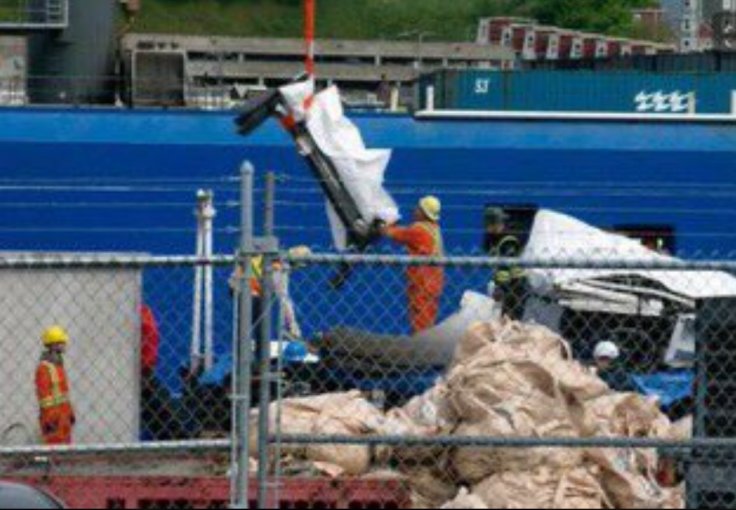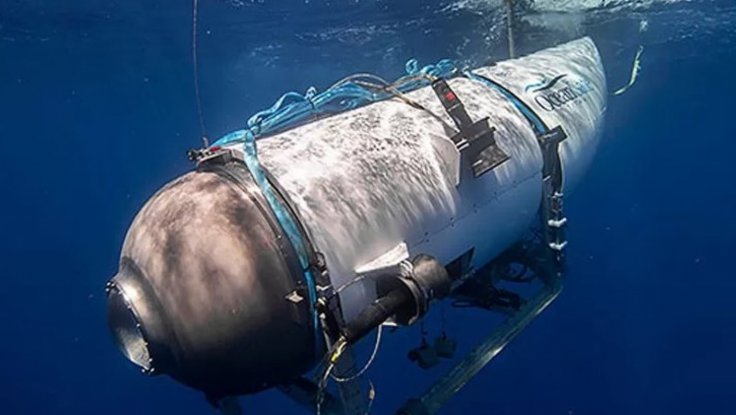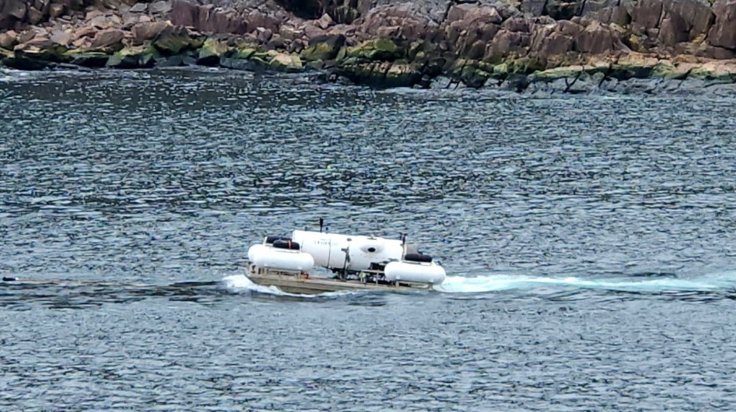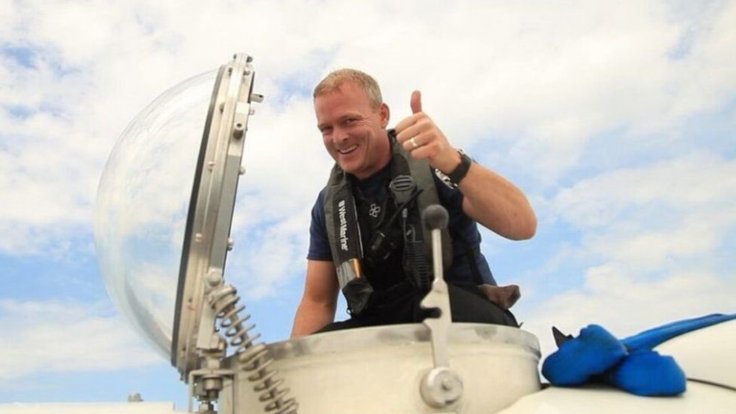"Presumed human remains" are believed to have been found among the debris from the Titan submarine that was brought ashore on Wednesday, the US Coast Guard said. The announcement comes a week after authorities confirmed that the Titanic-bound submarine imploded in the North Atlantic, resulting in the deaths of all five passengers on board.
The presumed human remains, which will be examined by American medical experts, were part of the evidence retrieved from the submersible and arrived at a Canadian pier on Wednesday. Pelagic Research Services, the company responsible for the remotely operated vehicles that recovered the Titan submarine remains, said that they have now "successfully completed" their offshore operations.
Found at Last

Coast Guard officials said that among the recovered pieces of the Titanic submarine what they believe to be human remains. These remains will be transported on a ship to a port in the United States, where they will undergo further testing and analysis.
The recent discoveries have surprised experts who initially believed that Titan had been completely destroyed in a "catastrophic implosion" during its voyage to the Titanic wreckage, resulting in the tragic deaths of all five people on board.
Several experts had earlier said that the remains of those onboard, including Hamish Harding, Paul-Henri Nargeolet, Stockton Rush, Shahzada Dawood, and Suleman Dawood, would likely never be recovered.
On Wednesday, officials announced that the remains were "carefully extracted from within the wreckage" that had been recovered earlier in the day.

"I am grateful for the coordinated international and interagency support to recover and preserve this vital evidence at extreme offshore distances and depths,' Marine Board of Investigation Capt. Jason Neubauer said in a statement.
"The evidence will provide investigators from several international jurisdictions with critical insights into the cause of this tragedy," he added.
However, Neubauer said that there is still a significant amount of work to be done in order to comprehend the events surrounding the Titan submarine and to prevent similar tragedies from happening in the future.
The MBI (Marine Board of Investigation) will continue gathering evidence and conducting interviews with witnesses to contribute to a public hearing regarding the incident.
Additionally, Pelagic Research Services, the team responsible for discovering the debris fields with their remote operating vehicle, stated that they are "still on a mission."
"They have been working around the clock now for 10 days, through the physical and mental challenges of this operation, and are anxious to finish the mission and return to their loved ones," the company said in a statement.

On Wednesday, debris from the doomed Titan submarine that suffered a "catastrophic implosion" at the bottom of the Atlantic while on its way to the wreckage of the Titanic was hauled ashore.
Finding the Final Remains
The massive metal pieces were unloaded from the Horizon Arctic vessel at the Canadian Coast Guard pier located in St. John's, Newfoundland, Canada. The development comes precisely 10 days after the ill-fated Titan submersible vanished during a tourist expedition organized by OceanGate Expeditions.

The submarine likely imploded on June 18, killing all five passengers on board almost instantly, about 16,000 feet away from the Titanic wreckage.
Among the pieces was a significant curved metal section in white color, while another object contained cables and various mechanical components.
Debris from the ill-fated Titanic submarine was first found on the seabed last Thursday following an extensive search and rescue operation, unveiling the tragic news that the submarine had suffered a "catastrophic implosion."

Canada, which assisted in the search operation for the submersible, announced on Saturday that it was conducting its own investigation into the incident.
The Canadian-flagged cargo vessel, Polar Prince, had towed the Titan out to sea last weekend. However, contact with the submersible was lost approximately one hour and 45 minutes after it descended into the depths of the ocean.
The search drew to a devastating close on Thursday after a Canadian ship found debris from the vessel on the ocean floor.
Following that the Coast Guard said that they "don't have an answer for prospects of recovering the bodies," noting how difficult it would be to look for and remove wreckage from the ocean floor.

To put it in a simpler way, the bodies may be lost forever and they might get preserved under the sea in the form of "mummies."
According to a New York Post report, Nicholas Passalacqua, the director of forensic anthropology at Western Carolina University, said that if the five passengers perished inside the Titan, their bodies would be preserved in an unusual manner within the submersible.
"Generally in an environment without oxygen, remains will not decompose much because the micro and macro organisms that would work to consume and decompose the tissues will be unable to survive," Passalacqua told Insider.
Melissa Connors, a director at Colorado Mesa University's Forensic Investigation Research Station, agreed with the evaluation, saying that the frigid temperatures of the Atlantic Ocean would help in the desiccation of the bodies in the event of a failure in the submersible's heating system.
"So you might end up with mummies," she told the outlet.
OceanGate informed the Coast Guard that the Titan submarine had a limited oxygen supply of 96 hours when it submerged near the coast of Newfoundland, initiating a race against time to locate the vessel and its five occupants.

The passengers were sealed inside the submersible with 17 bolts securing the hatch from the outside. Initial speculation suggested that the submersible might be trapped within the Titanic wreckage, but still intact at a depth of 12,500 feet, with oxygen running out.
The US and Canadian Coast Guards worked together to conduct the fanatic search, and numerous other countries also sent hundreds of ships to the area to help in the search.
This was one of the main issues with the rescue efforts was the depth since no successful rescue has ever been made deeper than 1,750 feet below the surface.









